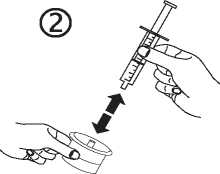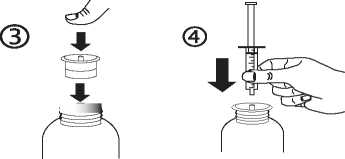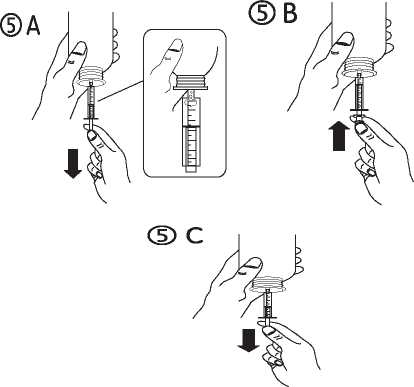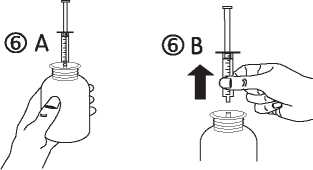Furosemide 4mg/Ml Oral Solution

Package leaflet: Information for the user Furosemide 4mg/ml Oral Solution Furosemide 8mg/ml Oral Solution Furosemide 10mg/ml Oral Solution

►
►
►
►
Read all of this leaflet carefully before you start taking this medicine because it contains important information for you.
Keep this leaflet. You may need to read it again.
If you have any further questions, ask your doctor or pharmacist.
This medicine has been prescribed for you only. Do not pass it on to others. It may harm them, even if their signs of illness are the same as yours.
If you get any side effects, talk to your doctor or pharmacist. This includes any possible side effects not listed in this leaflet. See section 4.
The name of your medicine is Furosemide 4mg/ml, 8mg/ml or 10mg/ml Oral Solution but it will be referred to as Furosemide throughout this leaflet.
What is in this leaflet:
1. What Furosemide is and what it is used for
2. What you need to know before you take Furosemide
3. How to take Furosemide
4. Possible side effects
5. How to store Furosemide
6. Contents of the pack and other information
Furosemide belongs to a group of medicines called diuretics or water tablets.
Furosemide can be used to remove the levels of excess water in the body caused by heart, lung, kidney, liver or blood vessel problems.
□ Do not take Furosemide if:
► you are allergic (hypersensitive) to Furosemide, sulphonamides or any other ingredients in this liquid (listed in Section 6). The signs of an allergic reaction include a rash, itching or shortness of breath
► you have symptoms of weakness, difficulty in breathing and light-headedness. This could be a sign of having too little water in the body
► you are dehydrated
► you have been told by your doctor you have low blood volume. Sign of low blood volume can include your skin turning pale, feeling dizzy, faint or nauseous and feeling very thirsty
► you are not passing water (urine) at all or only a small amount each day
► you have kidney failure or liver problems
► you have a severe change in blood salts, such as high potassium levels, very low potassium levels or low sodium levels. You may notice signs of this such as muscle cramps, weakness and tiredness.
► you are allergic to antibacterials called sulphonamides
► you are breast-feeding (see section Pregnancy and Breast-feeding).
Patient in a coma should not be given this medicine
Do not take this medicine if any of the above applies
to you. If you are not sure, talk to your doctor or
pharmacist before taking Furosemide.
Warnings and precautions
Talk to your doctor or pharmacist before taking
Furosemide if:
► you have low blood pressure. The signs of this includes dizziness, feeling less alert than usual fainting and general weakness
► you are elderly, if you are on other medications which can cause your blood pressure to drop and if you have other medical conditions that may cause your blood pressure to drop
► you have difficulty in passing water (urine), particularly if you have an enlarged prostrate gland
► you have gout
► you have hepatorenal syndrome. This is when you develop kidney failure as a result of severe liver failure
► you have low levels of protein in the blood. The signs of this may include swelling, feeling sick (nausea) or being sick (vomiting), diarrhoea and stomach pain
► you have brain disorders affecting your nervous system, or a condition called porphyria. This is a disorder that can cause skin blisters, pain in and around the stomach area (abdomen)
► you have diabetes
If you are not sure if any of the above applies to you, talk to your doctor or pharmacist before taking Furosemide .
Having tests whilst on Furosemide
While you are taking this medicine, your doctor may give you regular blood tests. Your doctor will do this to monitor levels of salts, minerals and glucose in your blood and to check that your kidneys are working properly.
Other medicines and Furosemide
Tell your doctor or pharmacist if you are taking or have recently taken any other medicines, including medicines obtained without a prescription, including herbal medicines. This is because Furosemide, the main ingredient of this medicine, can affect the way some other medicines work. Also some medicines can affect the way Furosemide works.
Tell your doctor if you are taking any of these medicines:
► medicines used to treat high blood pressure known as angiotensin converting enzyme (ACE) inhibitors or Angiotensin-II receptor antagonists, such as captopril, losartan
► medicines used to treat high blood pressure or prostate problems known as alpha-blockers, such as prazosin
► medicines used to treat high blood pressure, angina and heart failure known as beta blockers such as, propranolol, atenolol, sotalol
► medicines used to treat high blood pressure and other medicines used to remove water from the body known as diuretics, such acetazolamide and metolazone
► digoxin used to treat heart failure and unusual heart rhythms
► medicines used to treat unusual heart beats, such as amiodarone, disopyramide, flecainide, lidocaine and mexiletine
► a medicine used to prevent atrial fibrillation, unwanted clotting and stroke called warfarin
► a medicine used to treat high cholesterol, called clofibrate
► medicines used to treat pain and inflammation known as nonsteroidal anti-inflammatory drugs (NSAIDs), such as indometacin or salicylates such as aspirin
► medicines used to treat inflammation known as corticosteroids, such as prednisolone and dexamethasone
► medicines used to treat infections caused by bacteria, such as lymecycline, vancomycin, gentamicin, ceftriaxone and colistin
► medicines used to treat infections caused by fungus, such as amphotericin
► medicines used to treat infections caused by a virus, such as nelfinavir, ritonavir and saquinavir
► medicine used to prevent rejection after transplants, such as tacrolimus, ciclosporin,
► medicines used to treat depression, such as reboxetine, amitriptyline and phenelzine
► medicines used to treat mental problems called 'psychoses', such as amisulpride, sertindole, pimozide and chlorpromazine a medicine used to treat extreme mood swings, called lithium
► a medicine used to treat Attention Deficit Hyperactivity Disorder (ADHD), called atomoxetine
► medicines used to treat epilepsy, such as carbamazepine, phenobarbital and phenytoin
► medicines to treat asthma, such as salmeterol, salbutamol and theophylline. These medicines also treat chronic obstructive pulmonary disease
► medicines used to treat blocked noses, such as ephedrine and xylometazoline
► a medicine used to treat mouth ulcers and problems with the digestive area of the stomach (the upper gastrointestinal area), called carbenoxolone
► medicines used to treat cancer, called cisplatin and methotrexate
► medicine used to treat constipation, such as laxatives
► a medicine used to treat gout, called probenecid
► potassium salts used to treat low potassium in the blood
► anything that contains large amount of liquorice
► a medicine used to treat stomach ulcers, called sucralfate. Do not take sucralfate within two hours of taking Furosemide. This is because the sucralfate can stop the Furosemide from working properly

If you are not sure if any of the above applies to you, talk to your doctor or pharmacist before taking Furosemide.
Children and adolescents
This medicine should not be used in children and adolescents.
Pregna ncy, brea st-feeding and fertility
Talk to your doctor before taking this medicine i f :
► You are preg na nt or planning to become pregnant.
► You should not take this medicine if you are breast-feeding.
Ask your doctor or pharmacist for advice before taking any medicine.
Driving and using machines
Do not drive or operate machinery whilst taking this medicine as this medicine may make you feel less alert than normal.

Furosemide contains:
This medicine contains ethanol (alcohol). Each ml of oral solution contains 83.2mg ethanol (alcohol) i.e. daily dose of 40mg Furosemide would include 332.8mg-832mg ethanol, equivalent to 8.32ml-20.8ml of beer or 3.47ml-8.67ml of wine depending up on the prescribed strength. It is harmful to those who suffer from alcoholism. You should be aware the product has alcohol in it if:
► you are pregnant or breast-feeding
► you have liver disease
► you have epilepsy
► you have had a brain injury or brain disease
► you are going to give this medicine to a child.
This medicine also contains liquid maltitol (E965). If your doctor has told you that you cannot tolerate some sugars, see your doctor before taking this medicine.
Always take this medicine exactly as your doctor or pharmacist has told you. Check with your doctor or pharmacist if you are not sure.
Taking this medicine
► this medicine contains 4mg, 8mg or 10mg of Furosemide in each 1ml
► take this medicine by mouth
► it is best to take your dose in the morning
► plan your doses so that they do not affect your personal activities and sleep
► ask your doctor or pharmacist to help you plan the best time to take this medicine.
Adults
The usual dose for adult is
► 40mg each day
► take the dose prescribed by your doctor.
Older people
If you are an older person, your doctor may start you on a lower dose and gradually raise this dose.
Method of administration:
Use the measuring syringe provided in the pack to deliver the required dose.
Instructions for the use of syringe:
1. Open the bottle: press the cap and turn it anticlockwise (Figure 1) .
2. Separate the adaptor from the syringe (Figure 2). Insert the adaptor into the bottle neck (Figure 3). Ensure it is properly fixed. Take the syringe and put it in the adaptor opening (Figure 4).
©



PIL/UK/MFG040/01-03/v3
TURN OVER

4. Poss ible side effects
5. How to store Furosemide
3. Turn the bottle upside down. Fill the syringe with a small amount of solution by pulling the piston down (Figure 5 A) and then push the piston up in order to remove any possible air bubbl es (Figure 5B). Pull the piston down to the graduation mark corresponding to the quantity in millilitres (ml) prescribed by your doctor (Figure 5C).

4. Turn the bottle the right way up (Figure 6A)
Remove the syringe from the adaptor (Figure 6B).

5. Empty the contents of the syringe into the mouth by pushing the piston to the bottom of the syringe (Figure 7). Leave the syringe adaptor in place after first use. Close the bottle with the plastic screw cap. Wash the syringe with water and store in a clean place (Figure 8).

If you take more Furosemide than you should
If you take more of the medicine than you should, talk to a doctor or go to a hospital straight away. Take the medicine pack with you so the doctor knows what you have taken.
If you forget to take Furosemide
► If you forget a dose, take it as soon as you remember it. However, if it is nearly time for the next dose, skip the missed dose
► Do not take a double dose (two doses at the same time) to make up for a forgotten dose.
If you have any further questions on the use of this medicine, ask your doctor or pharmacist.
► difficulty in passing water (urine)
► a change in the amount of blood cells. The signs you may feel are feeling weak, unexplained bruises or bleeding, getting more infections and sores or ulcers in the mouth
► difficulty in controlling your blood sugar levels if you have diabetes
► developing diabetes. The signs you may feel are thirst, needing to go to the toilet a lot more and weight loss
► deafness (sometimes irreversible) (frequency uncommon) and/or ringing in the ears. If you h ave kidney problems you may be more at risk
► skin problems such as rash, itching and a serious illness with blistering of the skin, mouth, eyes and genitals. Acute generalised exanthematous pustulosis (AGEP) (acute febrile drug eruption) (frequency not known)
► swelling of the pancreas. This may show as severe pain in the back and/or in the area in and around the stomach (the abdomen) and jaundice which shows as yellowing of the skin and the whites of the eyes caused by liver or blood problems
► tingling or numbness in the hands and feet
► sudden severe joint pains linked to increased amounts of uric acid in the blood. This is known as gout
► blood clots forming when you are severely dehydrated
► low blood pressure. The signs you may feel are being unable to concentrate, feeling light-headed,
a feeling of pressure in the head, headache, feeling drowsy, feeling weak, changes in vision, dry mouth, dizziness, fainting and loss of consciousness (caused by symptomatic hypotension) (frequency not known).
This medicine may raise cholesterol and lipid (fat) levels in the blood.
If furosemide is used in babies born too soon (prematurely), it can cause:
► Persistence of a blood channel that normally closes at or around birth. This may cause heart failure, failure to grow, shortness of breath and rapid pulse
► Kidney stones and/or calcium deposits in the body.
This medicine should not be used in babies.
Tell your doctor if you get any of these side effects
► feeling sick (nausea) or being sick (vomiting)
► generally feeling unwell.
Reporting of side effects
If you get any side effects, talk to your doctor or pharmacist. This includes any possible side effects not listed in this leaflet. You can also report side effects directly via the Yellow Card Scheme at www.mhra.gov. uk/yellowcard.
By reporting side effects you can help provide more information on the safety of this medicine.
► Keep out of the sight and reach of children.
► Do not use this medicine after the expiry date stated on the carton box and label after 'Exp'.
► The expiry date refers to the last day of the month.
► Do not store above 25°C.
► Discard 60 days after first opening.
► Do not throw away any medicines via wastewater or household waste. Ask your pharmacist how to throw away medicines you no longer use. These measures will help protect the environment.
Furosemide Oral Solution is supplied in bottles containing 100ml, 150ml and 300ml solution.
Not all pack sizes may be marketed.
Marketing Authorisation Holder and Manufacturer:
Syri Limited t/a Thame Laboratories,
Unit 4, Bradfield Road,
Ruislip, Middlesex,
HA4 0NU, UK. [POM
This medicinal product is authorised in the Member States of the EEA under the following names:
UK and IE: Furosemide 4mg/ml Oral Solution Furosemide 8mg/ml Oral Solution Furosemide 10mg/ml Oral Solution
This leaflet was last revised in 04/2016.

Thame Laboratories
6. Contents of the pack and other information
Like all medicines, Furosemide can cause side effects, although not everybody gets them.
If you have an allergic reaction to Furosemide, see a doctor straight away.
An allergic reaction may include:
► any kind of skin rash
► difficulty in breathing, fever and collapse
► more long-term allergic reactions including swelling of the kidneys and blood vessels and particular sensitivity of the skin to sunlight and other sources of light such as sun-beds.
If you get any of the following side effects, see
your doctor as soon as possible:
► changes in the amounts of water, salts or minerals in your body. The signs of this you may feel are thirst, headache, feeling dizzy particularly when standing up, feeling confused, muscle twitching and unusual heart beats. These may happen quickly but also over time. If you have liver problems you may be more at risk of these symptoms
What Furosemide contains
The active ingredient is Furosemide.
Each ml of solution contains 4mg, 8mg or 10mg Furosemide.
The other ingredients are: citric acid monohydrate (E330), ethanol, sodium hydroxide (E524), disodium phosphate, anhydrous (E339), liquid maltitol (E965), cherry flavour [containing propylene glycol (E1520)] and purified water.
What Furosemide looks like and contents of the pack
Furosemide oral solution is a clear, colourless, greenish yellow to pale brown coloured solution with cherry flavour supplied in amber glass bottles with tamper evident child resistant plastic cap. The pack also contains 10ml oral syringe with 0.5ml graduation marks and a syringe adaptor.
PIL/UK/MFG040/01-03/v3